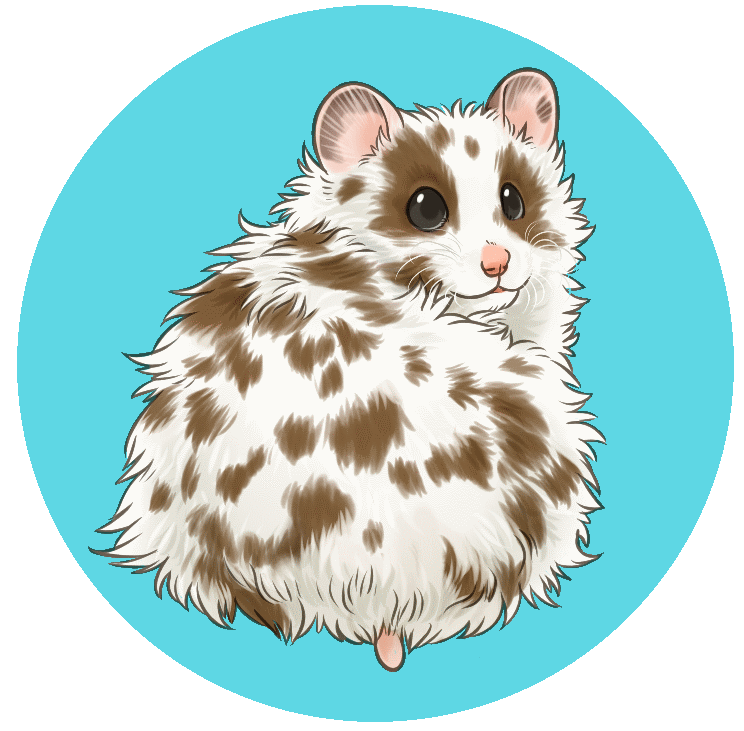About Syrian Hamsters
~ The Basics ~
Syrian hamsters are often sold in pet stores under a variety of made up names such as “teddy bear” or “fancy bear” to appeal to young buyers. There are 24 different species of wild hamsters, five of which are domesticated. As the name suggests, wild Syrian hamsters are native to an area outside of Aleppo, Syria where they live near agricultural areas in extensive burrows up to two feet underground. A burrow is a series of underground tunnels and chambers animals dig and use for various purposes. In the wild they eat plants, grains, seeds, insects and occasionally other small animals.
Of the 5 domesticated hamster species, Syrians are the largest, growing to an average of 5-8 inches long and are thickly built, weighing between 100 and 300 grams. The average lifespan of a Syrian hamster is between 18 months and 2 years. They have large cheek pouches which they use to move food and then deposit in dedicated food “caches” and in their nest. Syrian hamsters have scent glands located on their hips which they will rub on objects in their enclosure to mark their territory. Scent glands tend to be more visible on males than on females. Female hamsters are slightly larger than males and go into heat (a time when they are ready to mate and become pregnant) every 4 day. When females are in heat, it is normal for them to have a musky odor. Hamsters have naturally orange teeth that grow constantly. They need to be provided with items they enjoy chewing on to keep their teeth from becoming overgrown.
Syrian hamsters are territorial and completely solitary. They will fight and often kill each other if housed together. Even a brief meeting of two Syrian hamsters can have disastrous results. As prey animals, they should not be exposed to other household pets such as cats and dogs which can harm them as well as cause stress because their instincts tell them they might be a meal! Other pets can also transmit diseases and parasites which can harm your hamster.
Syrian hamsters are crepuscular, meaning they are most active at dusk and dawn. Additionally, hamsters will be active for periods during the night while sleeping through most of the day. While they are awake, hamsters are very active; eating, drinking, tunneling, using sand baths, chewing and running upwards of 5 miles a night. In captivity, they need deep bedding, a large cage and a wheel to engage in the behaviors they would in the wild. Hamsters are sensitive to drafts, damp and temperature fluctuations and should be kept at temperatures between 65-75 degrees. It is important to keep their cage away from windows as sunlight hitting the cage can trap heat. Hamsters should never get wet or be bathed. They use sand baths to keep themselves clean.

